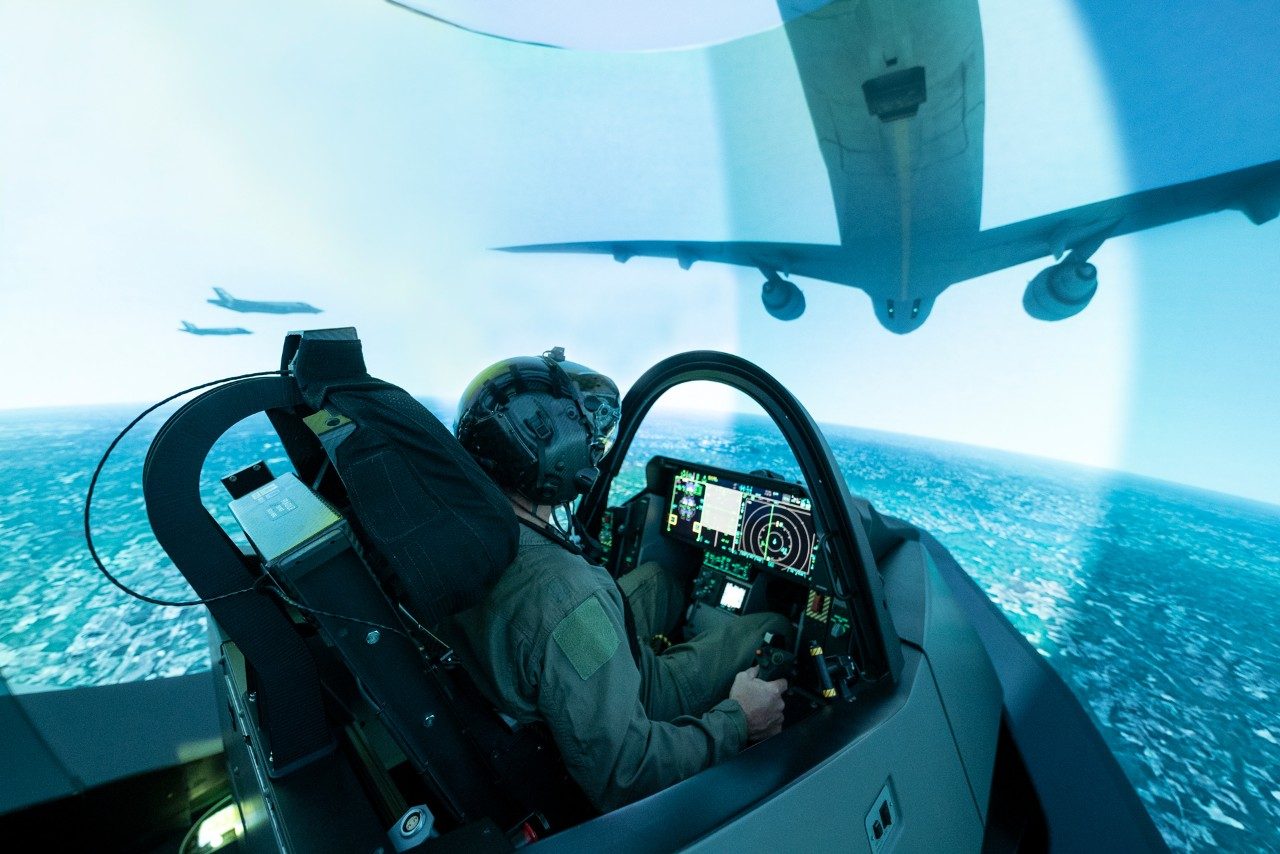Three Ways Lockheed Martin is Maturing F-35 Pilot Training
When a pilot is selected to fly the world’s most advanced fighter jet, it is an exciting and challenging assignment made for some of the top aviators across the military. This requires progressing through a training curriculum that puts students to the test with simulated events they could encounter while in the actual jet. Ensuring pilots are prepared for any mission at any time is a top priority for the F-35 training program.
As threats evolve, so does the mission, making it critical for every training event and scenario to be ones that best prepare F-35 pilots to make decisions faster, smarter and safer. As part of Lockheed Martin’s 21st Century Security vision, pilot training is advancing in three critical ways: concurrence, the simulated threat environment, and sustainment.
A Seamless Transition
Before any pilot straps into the F-35, they are trained in the full mission simulator, a trainer that replicates the technology and controls found in the actual jet. This style of training prepares aviators to handle the jet as they would in the air under a less stressful environment and focus on building the skills needed to jump into the single-seater aircraft.
To replicate exactly what a pilot will experience once they take their first flight, Lockheed Martin works in lockstep with the Joint Program Office and customers currently training and flying the F-35 to ensure concurrence between the jet and the trainer. By keeping software current from trainer to aircraft, we are ensuring a more seamless transition for pilots to execute their missions safely and effectively.

Ready for the Next Mission
Advanced threats mean advanced training, and Lockheed Martin partners with customers around the globe to better understand what missions they need to train for next and develop scenarios in pilot training. As a critical node in connecting the joint force, the F-35 flies at the center of the 21st Century Security vision to deliver integrated, mission-focused defense capabilities. F-35 operators need to be well-equipped for whatever threats they may face and safely conduct their missions. Within the simulated events conducted during training, pilots are constantly being challenged and are building the skills needed to fly with proficiency and execute their tasks.
Lockheed Martin works with speed and urgency to introduce changes and advancements to training that ensure pilots stay ahead of ready and are confident when climbing into the cockpit of the F-35.
Training Continuity Across Multiple Training Devices
The demand for more pilots to be trained spans across commercial and military industries, leading Lockheed Martin to invest in new ways to maintain the fidelity needed to conduct and certify pilots while reducing the overall sustainment cost and space needed to do so.
F-35 pilot training is conducted across several devices ranging from a desktop trainer to get familiar with the jet and basic flight to the full mission simulator that fully immerses the student in the environment and replicates the controls and functions of the actual jet. The varying level of fidelity allows for progressive training, increased mission capacity, and building of critical skills.
And, with investments Lockheed Martin has made to technologies such as the AMAZE visual display system, the same level and fidelity of training will be conducted with reduced overall sustainment costs and needs, meaning the focus is on training rather than maintaining the training system.
With commitment to lowering overall lifecycle cost of training devices and making advancements in technology that keeps the focus on training – not sustaining – both time and cost are saved across the F-35 training system.
As pilot training continues to evolve, Lockheed Martin remains committed to ensuring training excellence to prepare world class pilots and maintainers for any mission, any time.




